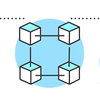Understanding the Difference between Promises and Callbacks in JavaScript
JavaScript is a powerful programming language that allows developers to create complex web applications. One of the most important concepts in JavaScript is the ability to handle asynchronous code. In order to do this, developers use either promises or callbacks. While they both serve the same purpose, they have some fundamental differences. In this article, we will explore the difference between promises and callbacks in JavaScript.
What are Callbacks?
Callbacks are functions that are passed as arguments to other functions. They are often used to handle asynchronous code. In other words, when a function is executing a time-consuming operation, it can pass a callback function to handle the result of that operation. Callbacks are a powerful way to handle asynchronous code, but they can be challenging to read and maintain.
What are Promises?
Promises are a more recent addition to the JavaScript language. They are objects that represent the eventual completion or failure of an asynchronous operation and its resulting value. Promises are a cleaner way to handle asynchronous code than callbacks. They provide a more readable and maintainable way to handle complex asynchronous code.
Differences between Promises and Callbacks
The main difference between promises and callbacks is their structure. Callbacks are functions that are passed as arguments to other functions. Promises, on the other hand, are objects that represent the eventual completion or failure of an asynchronous operation. Promises are more readable and maintainable than callbacks. Promises also provide more functionality, such as the ability to chain multiple asynchronous operations together and handle errors in a cleaner way.
Another difference is that callbacks are prone to callback hell. This happens when a large number of nested callbacks are used to handle asynchronous code. This can make the code difficult to read and maintain. Promises solve this problem by providing a more readable and maintainable way to handle complex asynchronous code.
Conclusion
In conclusion, while both promises and callbacks serve the same purpose, they have some fundamental differences. Promises are a more modern and cleaner way to handle asynchronous code than callbacks. They provide a more readable and maintainable way to handle complex asynchronous code. Promises also provide more functionality, such as the ability to chain multiple asynchronous operations together and handle errors in a cleaner way. Asynchronous programming is an essential part of modern web development, and understanding the differences between promises and callbacks is crucial to writing high-quality JavaScript code.

If you're preparing for a senior Node.js developer position, it's important to be ready for technical interview questions that will test your knowledge of Node.js and its related technologies. In this

As a JavaScript developer, it's essential to have a solid understanding of the language and its various concepts. In this article, we will provide some common interview questions and their answers to

Frontend development is an essential part of web development that focuses on building the user interface of a website or application. Frontend developers are responsible for creating visually appealin

Understanding how `this` works in JavaScript is essential for any developer working with the language. In this article, we will explore what `this` is, how it works, and common use cases.

Event delegation is a concept in JavaScript that allows developers to handle events efficiently and improve the performance of web applications. In this article, we will explore what event delegation

JavaScript is a powerful programming language that allows developers to create complex web applications. One of the most important concepts in JavaScript is the ability to handle asynchronous code. In

As web applications become more complex, the size of the JavaScript bundles that are required to run them can become unwieldy. This can lead to slow load times and poor user experiences, particularly

Managing state in a complex application can be a daunting task, but Redux can help simplify the process. Redux is a popular library for managing state in JavaScript applications, and it can be used wi

React is a popular JavaScript library for building user interfaces. One of the key features that sets React apart from other libraries is its use of a virtual DOM. In this article, we will explore wha
